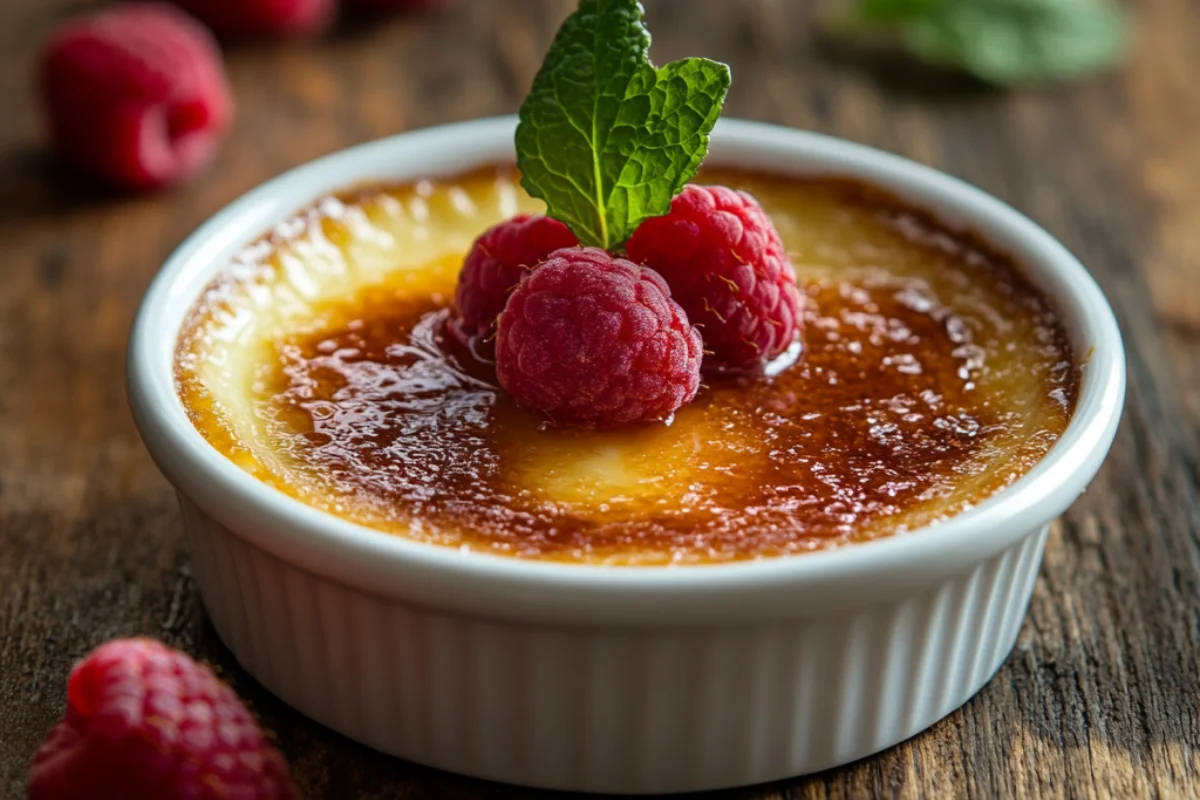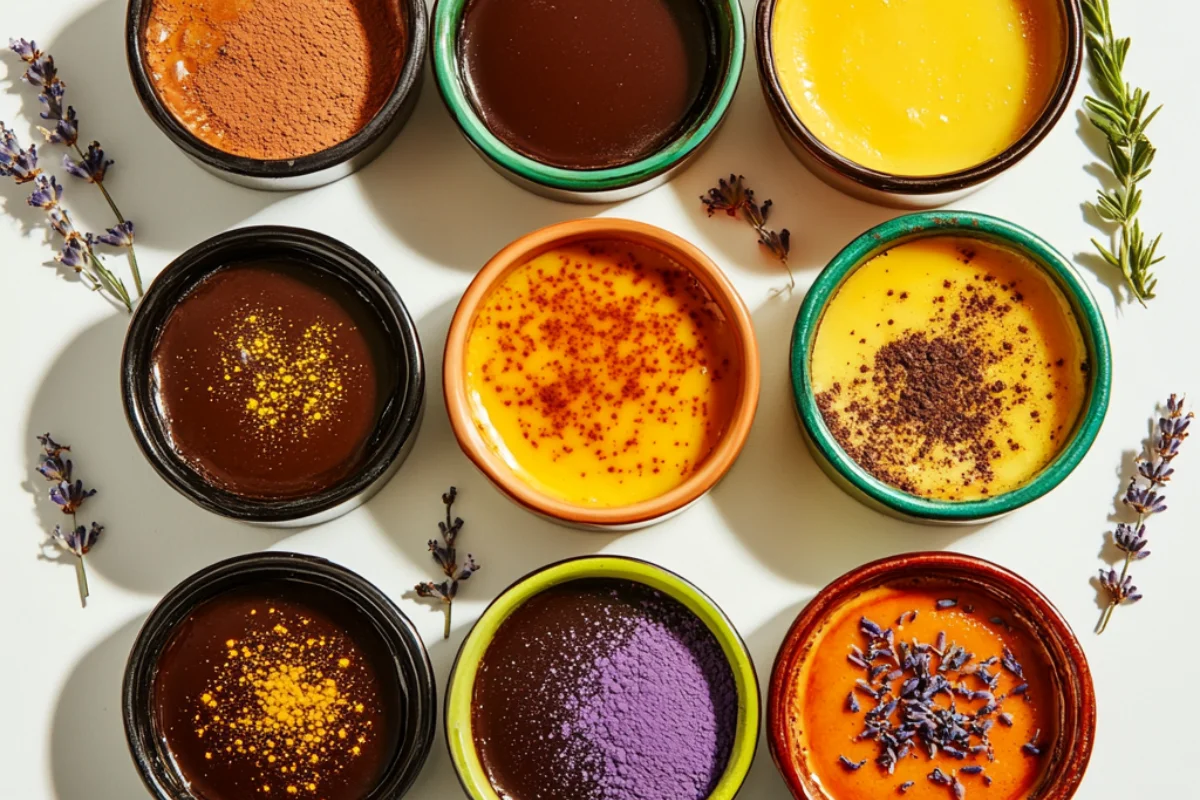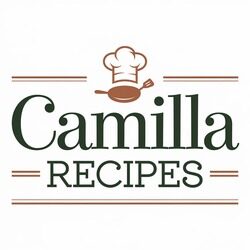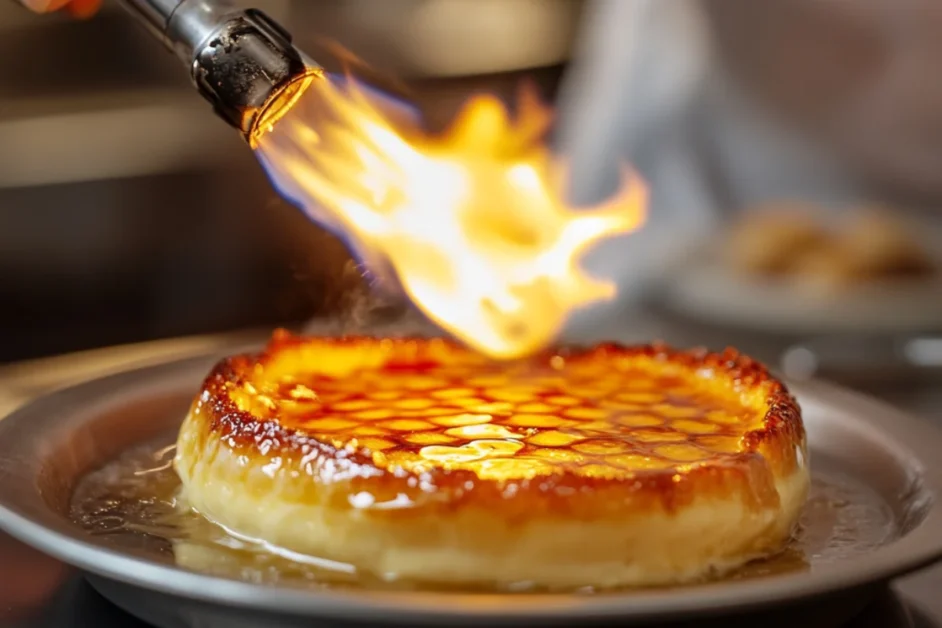Exploring the Basics of Crème Brûlée
Introduction to Crème Brûlée
Crème Brûlée is more than just a dessert; it is an indulgent experience that blends creamy custard with a crisp, caramelized sugar topping. This classic French dessert has delighted food enthusiasts for centuries, standing as a testament to the art of simplicity in culinary craftsmanship.
In this article, we’ll explore the history, ingredients, and cultural variations of Crème Brûlée. By understanding its fundamentals, you’ll gain a deeper appreciation for this iconic dessert.
What is Crème Brûlée?

Crème Brûlée, which translates to “burnt cream” in French, is a rich, creamy custard dessert topped with a brittle caramelized sugar layer. This dessert is typically served in shallow ramekins to emphasize its distinct textures — the smooth custard beneath the crunchy sugar topping.
Key Features:
- A luscious custard base made from heavy cream, egg yolks, sugar, and vanilla.
- A glass-like sugar crust achieved through caramelization.
- A balance between silky richness and textural contrast.
The Historical Roots of Crème Brûlée
The origins of Crème Brûlée are steeped in debate, with France, England, and Spain all claiming to be the birthplace of this delightful dessert. While the first recorded recipe appeared in a French cookbook in 1691, variations of custard desserts existed long before.
Notable Historical Insights:
- The Spanish version, Crema Catalana, is often considered a precursor to Crème Brûlée.
- England’s “Trinity Cream,” served at Trinity College, Cambridge, in the 17th century, bears striking similarities.
- The French popularized the dessert, adding it to their fine dining repertoire in the 19th century.
Each culture added its own unique touch, but the French term and method have since become synonymous with the dessert.
Traditional Ingredients of Crème Brûlée
At its core, Crème Brûlée requires only a few ingredients, making the quality of each component essential for success.
Essential Ingredients:
- Heavy Cream: Provides the rich, velvety texture that defines the custard base.
- Egg Yolks: Serve as the thickening agent, ensuring a silky consistency.
- Sugar: Used both in the custard base and as the caramelized topping.
- Vanilla: Adds depth and aroma, typically sourced from vanilla beans or extract.
The simplicity of these ingredients allows the flavors to shine while leaving room for creative variations.
How Crème Brûlée Differs From Other Custard Desserts
Custard-based desserts are a broad category, but Crème Brûlée stands apart due to its caramelized sugar crust. Here’s how it compares to similar treats:
- Creme Caramel: While both use a custard base, crème caramel is inverted to showcase a liquid caramel sauce, unlike the hardened topping of Crème Brûlée.
- Pudding: Pudding is thicker, often made with cornstarch or gelatin, and lacks the baked texture of Crème Brûlée.
- Flan: Flan shares similarities but often includes a denser consistency and is garnished with liquid caramel.
Crème Brûlée’s defining feature is its textural interplay between the creamy base and crispy top.
The Role of Sugar and Cream in Crème Brûlée
The Magic of Sugar:
Sugar plays a dual role in Crème Brûlée:
- It sweetens the custard base.
- It forms the crackling caramelized layer when torched.
The Importance of Cream:
The high-fat content in cream creates the signature silky texture, making Crème Brûlée indulgent without feeling overly heavy. The balance of sweetness and creaminess is what makes it truly irresistible.
Variations of Crème Brûlée Across Different Cultures

Though traditionally French, Crème Brûlée has inspired variations worldwide. Each culture adds its own twist, highlighting local ingredients and flavors.
Popular Variations:
- Crema Catalana (Spain): Often flavored with cinnamon and citrus zest.
- Japanese Crème Brûlée: Infused with matcha (green tea) for an earthy flavor.
- Indian Spiced Crème Brûlée: Incorporates cardamom and saffron for exotic warmth.
- American Adaptations: Include flavors like pumpkin, espresso, and salted caramel.
These variations showcase the universal appeal of Crème Brûlée while celebrating cultural diversity.
Importance of Balancing Flavors in Crème Brûlée
Perfect Crème Brûlée is a testament to balance. Too sweet, and it can become cloying; too creamy, and it risks being overly rich.
Tips for Flavor Harmony:
- Vanilla as a Base: Enhances the custard without overpowering.
- Sugar Control: Keep sweetness moderate to complement the caramelized topping.
- Experiment with Additions: Subtle hints of citrus, liqueurs, or spices can elevate the dessert.
Balancing these elements ensures a sophisticated flavor profile.
Tools and Equipment Needed for Making Crème Brûlée
The right tools are essential for achieving Crème Brûlée’s signature texture and appearance.
Must-Have Equipment:
- Ramekins: Shallow dishes to create an even custard layer.
- Blow Torch: For caramelizing sugar to a crisp finish.
- Fine Mesh Strainer: Ensures a silky smooth custard by removing lumps.
- Water Bath: Prevents overcooking by maintaining consistent heat during baking.
These tools allow for professional-quality results in a home kitchen.
Nutritional Profile of Crème Brûlée
While Crème Brûlée is an indulgence, understanding its nutritional value can help you enjoy it mindfully.
Typical Nutritional Facts (Per Serving):
- Calories: ~250-300
- Fat: 15-20 grams (primarily from heavy cream)
- Protein: 5-6 grams (from egg yolks)
- Carbohydrates: 20-25 grams (from sugar)
By balancing portion sizes, Crème Brûlée can be a delightful part of a balanced diet.
Mastering the Techniques of Perfect Crème Brûlée

The Secret Behind a Silky Custard Base
The foundation of a flawless Crème Brûlée lies in its silky custard base. Achieving this velvety texture requires attention to detail, from ingredient selection to preparation techniques.
Key Tips:
- Use fresh, high-quality heavy cream and egg yolks. The fat content in cream is crucial for creating that signature luxurious texture.
- Gently whisk the yolks and sugar until combined, avoiding overmixing, which introduces air and creates bubbles.
- Strain the mixture before baking to remove impurities or lumps, ensuring a perfectly smooth custard.
Mastering these steps ensures that every bite of your Crème Brûlée melts in your mouth.
Choosing the Right Vanilla: Fresh Bean vs. Extract
Vanilla is the soul of traditional Crème Brûlée, but selecting the right type can elevate the dessert’s flavor profile.
Options:
- Vanilla Bean: Provides an authentic, rich flavor and visual appeal with tiny black specks throughout the custard.
- Vanilla Extract: A convenient alternative with a robust taste, but choose pure extract over artificial versions.
- Vanilla Paste: Combines the best of both worlds, offering the flecks of a bean and the convenience of extract.
When aiming for a gourmet touch, vanilla beans are unmatched in delivering aromatic depth and elegance.
Why Double-Boiling is Essential for Custard Perfection
Double-boiling (bain-marie) is a non-negotiable technique in Crème Brûlée preparation. It ensures even cooking and prevents the custard from curdling.
Why It Matters:
- Gentle Heat Distribution: Protects the egg yolks from scrambling.
- Consistent Texture: Avoids a rubbery or grainy custard by maintaining low, steady temperatures.
How to Do It:
- Place ramekins in a deep baking dish.
- Pour hot water into the dish, reaching halfway up the ramekins.
- Bake gently, allowing the water to buffer the heat.
This technique is the secret to a luxuriously smooth custard.
Avoiding Common Mistakes in Baking Crème Brûlée
Mistakes can turn a seemingly simple dessert into a disaster. Here are the pitfalls to avoid:
- Overbaking: Leads to a firm, rubbery texture. Custard should jiggle slightly when done.
- Skipping the Water Bath: Causes uneven cooking and a grainy finish.
- Rushing the Process: Custard requires patience; rushing leads to undesirable textures or burnt sugar toppings.
Avoiding these missteps ensures your Crème Brûlée maintains its signature creaminess and crunch.
Understanding the Ideal Temperature and Baking Time
Baking Crème Brûlée to perfection requires precise temperature control.
Ideal Settings:
- Oven temperature: 300°F to 325°F (150°C to 160°C) for even baking.
- Bake time: 30–45 minutes, depending on ramekin size.
Tips for Success:
- Monitor the custard closely during the final minutes.
- Look for a slight jiggle in the center while the edges are firm.
Overcooking is a common error, so always err on the side of caution for that perfectly set custard.
The Science of Creating the Caramelized Sugar Crust
The caramelized sugar topping defines Crème Brûlée, offering a delightful contrast to the creamy custard.
How It Works:
- Sugar melts under intense heat, breaking down into liquid caramel before solidifying into a crisp crust.
- The process requires just the right balance of heat and timing to avoid burning.
Tips:
- Use fine granulated sugar for even caramelization.
- Apply the torch in sweeping motions to prevent hot spots.
A well-executed sugar crust shatters satisfyingly with every bite.
Mastering the Torch Technique: Getting the Perfect Crunch
Using a kitchen torch is the most effective way to achieve that iconic caramelized top.
Steps for Success:
- Sprinkle an even layer of sugar over the chilled custard.
- Hold the torch 2–3 inches away, moving it in circles.
- Watch as the sugar melts and turns golden brown.
Pro Tips:
- Avoid overheating, which can lead to burnt or bitter flavors.
- Allow the caramel to cool briefly before serving for optimal crunch.
Perfecting the torch technique guarantees a beautifully caramelized crust every time.
How to Prevent a Cracked or Grainy Custard
Cracks and graininess can ruin the texture of Crème Brûlée. Here’s how to avoid these issues:
Causes and Solutions:
- Overmixing Eggs: Introduces air bubbles, which can lead to cracks. Mix gently for a uniform custard.
- High Baking Temperature: Curdles the custard, creating a grainy texture. Stick to low, steady heat.
- Skipping the Strain: Unstrained custard may have lumps that interfere with the texture.
Taking these precautions ensures a seamless, creamy custard base.
Testing for Doneness: Knowing When Crème Brûlée is Perfectly Set
Knowing when to pull Crème Brûlée from the oven is a skill that comes with practice.
Indicators of Doneness:
- The edges should be set, but the center should wobble slightly when shaken.
- The surface should not appear liquid but will firm up as it cools.
Testing Methods:
- Gently tap the ramekin; if the center jiggles slightly, it’s ready.
- Avoid inserting a toothpick, as this can disrupt the custard’s smooth surface.
A perfectly baked Crème Brûlée is both firm yet delicate, offering a melt-in-your-mouth experience.
How to Infuse Unique Flavors into Crème Brûlée (E.g., Citrus, Lavender, Coffee)
While vanilla is traditional, infusing Crème Brûlée with unique flavors can create exciting variations.
Popular Infusions:
- Citrus Zest: Adds brightness and a subtle tang.
- Lavender: Provides floral notes, perfect for a sophisticated twist.
- Coffee or Espresso: Introduces bold, earthy flavors.
- Chocolate: Adds richness and depth.
Infusion Method:
- Heat cream with the chosen flavoring (e.g., lavender buds, citrus zest) and steep for 15–20 minutes.
- Strain to remove solids before mixing with the eggs and sugar.
Infusing flavors elevates Crème Brûlée into a personalized dessert masterpiece.
Elevating Your Crème Brûlée to Gourmet Levels
The Role of Presentation in Serving Crème Brûlée
In the world of fine dining, presentation is as essential as flavor. Crème Brûlée, with its rich custard base and caramelized sugar topping, deserves an equally elegant presentation.
Tips for Stunning Presentation:
- Use Elegant Ramekins: Opt for porcelain or ceramic ramekins in neutral tones for a timeless look.
- Garnish Thoughtfully: Add a sprig of mint, fresh berries, or edible flowers for a pop of color.
- Serve with Style: Use dessert plates with subtle designs and pair them with dainty dessert spoons.
Presentation enhances the visual appeal and sets the stage for an unforgettable dining experience.
Pairing Crème Brûlée with Wines, Coffees, and Desserts
Pairing Crème Brûlée with complementary beverages or side desserts can elevate its flavors.
Perfect Pairings:
- Wines:
- A rich Sauternes or late-harvest Riesling complements the custard’s sweetness.
- Sparkling wines add a refreshing contrast to the creamy texture.
- Coffees:
- Espresso’s bold notes balance the dessert’s richness.
- A vanilla latte can enhance the vanilla custard flavors.
- Side Desserts:
- Pair with a light fruit sorbet for a refreshing counterpoint.
- Serve alongside a thin almond biscotti for a delightful crunch.
Thoughtful pairings enrich the overall experience, highlighting the nuances of Crème Brûlée.
The Debate Over Brown Sugar vs. White Sugar for Caramelization
When it comes to the sugar crust, the choice of sugar can influence both flavor and texture.
Brown Sugar:
- Adds a hint of molasses, creating a richer, deeper flavor.
- Caramelizes faster but can be prone to burning.
White Sugar:
- Delivers a clean, classic caramel flavor.
- Melts evenly, producing a smoother, more uniform crust.
Pro Tip: For a balanced approach, try a blend of brown and white sugars to achieve depth and smoothness in your caramelized topping.
Experimenting with Creative Toppings and Garnishes
While traditional Crème Brûlée relies on simplicity, creative toppings can bring a modern twist to this classic dessert.
Unique Topping Ideas:
- Fresh Fruits: Sliced strawberries, raspberries, or figs.
- Nutty Crunch: Toasted almonds, pistachios, or hazelnuts.
- Exotic Additions: Shredded coconut, candied ginger, or edible gold flakes.
- Savory Twist: A sprinkle of flaky sea salt to contrast the sweetness.
Toppings and garnishes allow you to personalize Crème Brûlée while maintaining its luxurious essence.
How to Store and Reheat Crème Brûlée for Later
Storing Crème Brûlée properly ensures it retains its quality and flavor when enjoyed later.
Storage Tips:
- Cover the ramekins tightly with plastic wrap to prevent drying.
- Store in the refrigerator for up to 3 days.
Reheating:
- Bring the custard to room temperature for 20–30 minutes.
- Sprinkle fresh sugar and caramelize with a torch to restore the crust.
Reheating with care keeps the integrity of the textures intact.
Making Crème Brûlée Ahead of Time: Tips for Planning a Dinner Party
Crème Brûlée is an excellent choice for make-ahead desserts, making it a stress-free option for hosting.
Steps for Success:
- Prepare Custard in Advance: Bake the custard a day ahead and refrigerate.
- Torch Before Serving: Add the sugar topping and caramelize just before serving to ensure a crisp crust.
- Set the Mood: Pair the dessert with dim lighting and elegant tableware for a sophisticated ambiance.
Preparing Crème Brûlée ahead ensures you can focus on entertaining your guests.
Vegan and Dairy-Free Alternatives for Crème Brûlée
For those with dietary restrictions, vegan and dairy-free Crème Brûlée options are becoming increasingly popular.
Substitutions:
- Cream Alternatives: Use coconut cream or almond milk for a creamy texture.
- Egg Replacements: Silken tofu or agar-agar can mimic the custard’s consistency.
- Sugar Topping: Opt for raw cane sugar or organic substitutes.
Pro Tip:
Infuse plant-based creams with vanilla or citrus for enhanced flavors.
These adaptations ensure everyone can enjoy this beloved dessert without compromising on taste.
Troubleshooting: Salvaging an Overbaked or Undercooked Crème Brûlée
Even experienced bakers encounter mishaps. Here’s how to rescue Crème Brûlée gone wrong:
Overbaked Custard:
- Problem: Rubber-like texture or cracks.
- Solution: Serve with a topping of whipped cream or fruit compote to mask imperfections.
Undercooked Custard:
- Problem: Runny or unset center.
- Solution: Return to a low oven (300°F) in a water bath and bake until the custard sets.
Troubleshooting helps you recover your dessert and ensures nothing goes to waste.
Popular Myths About Crème Brûlée: Separating Fact from Fiction
There are many myths surrounding Crème Brûlée. Let’s debunk the most common ones:
- Fact: While a torch is ideal, you can use an oven broiler for caramelizing sugar.
- Fact: With attention to detail, Crème Brûlée is surprisingly simple to make.
- Fact: Infusing flavors like citrus, chocolate, or lavender adds variety.
Understanding the facts helps build confidence in mastering this dessert.
The Joy of Sharing Crème Brûlée: Why It’s the Perfect Dessert for Special Occasions
Crème Brûlée is more than a dessert—it’s a symbol of celebration and indulgence.
Why It’s Special:
- Elegant Appeal: Its sophisticated look makes it perfect for weddings, anniversaries, or holiday dinners.
- Interactive Element: Guests enjoy cracking the caramelized top, making it a fun dining experience.
- Versatility: Easy to personalize with flavors and garnishes for any theme.
Sharing Crème Brûlée creates memorable moments that elevate any special occasion.
More FAQs About Crème Brûlée
Here are 10 frequently asked questions about Crème Brûlée, along with detailed answers to help you master this iconic dessert:
1. What is the best sugar for caramelizing Crème Brûlée?
Fine granulated sugar is ideal because it melts evenly, creating a smooth and uniform caramel crust. Brown sugar can also be used for a richer flavor but may burn faster.
2. Can I make Crème Brûlée without a torch?
Yes! Use your oven’s broiler to caramelize the sugar. Place the ramekins under the broiler and keep a close eye to prevent burning.
3. Why does my custard have bubbles or cracks?
Bubbles or cracks indicate overmixing or overbaking. Mix the custard gently and bake at a low temperature in a water bath to avoid these issues.
4. Can I flavor Crème Brûlée with something other than vanilla?
Absolutely! Popular flavors include chocolate, coffee, citrus zest, lavender, and even savory options like rosemary or thyme.
5. Why is my sugar crust not crispy?
A soft crust occurs if the sugar wasn’t caramelized long enough. Ensure an even layer of sugar and move the torch in circular motions until the surface turns golden brown and hardens.
6. Can I freeze Crème Brûlée?
While freezing is not recommended for optimal texture, you can freeze the custard base before caramelizing. Thaw in the refrigerator, then add sugar and torch it before serving.
7. How do I know when Crème Brûlée is done baking?
The edges should be set, while the center should jiggle slightly when shaken. The custard will firm up as it cools.
8. Can I use plant-based milk for a dairy-free Crème Brûlée?
Yes! Coconut cream, almond milk, or cashew milk are excellent substitutes for heavy cream. Adjust the flavorings to complement the plant-based milk.
9. What is the difference between Crème Brûlée and Crema Catalana?
Crème Brûlée uses cream and vanilla, while Crema Catalana often includes milk, citrus zest, and cinnamon. Crema Catalana is typically torched with a hot iron.
10. Can Crème Brûlée be made ahead of time?
Yes! Prepare the custard up to 3 days in advance, store it in the fridge, and caramelize the sugar topping just before serving.

